Bulbs
Flower Basics
Flower Beds & Specialty Gardens
Flower Garden
Garden Furniture
Garden Gnomes
Garden Seeds
Garden Sheds
Garden Statues
Garden Tools & Supplies
Gardening Basics
Green & Organic
Groundcovers & Vines
Growing Annuals
Growing Basil
Growing Beans
Growing Berries
Growing Blueberries
Growing Cactus
Growing Corn
Growing Cotton
Growing Edibles
Growing Flowers
Growing Garlic
Growing Grapes
Growing Grass
Growing Herbs
Growing Jasmine
Growing Mint
Growing Mushrooms
Orchids
Growing Peanuts
Growing Perennials
Growing Plants
Growing Rosemary
Growing Roses
Growing Strawberries
Growing Sunflowers
Growing Thyme
Growing Tomatoes
Growing Tulips
Growing Vegetables
Herb Basics
Herb Garden
Indoor Growing
Landscaping Basics
Landscaping Patios
Landscaping Plants
Landscaping Shrubs
Landscaping Trees
Landscaping Walks & Pathways
Lawn Basics
Lawn Maintenance
Lawn Mowers
Lawn Ornaments
Lawn Planting
Lawn Tools
Outdoor Growing
Overall Landscape Planning
Pests, Weeds & Problems
Plant Basics
Rock Garden
Rose Garden
Shrubs
Soil
Specialty Gardens
Trees
Vegetable Garden
Yard Maintenance
How to Make a Japanese-Style Water Feature
How to Make a Japanese-Style Water Feature. Building a Japanese-style water feature can add a dramatic accent to your garden. With a few simple elements, you can create your own "tsukubai" or water basin, where, based on Japanese tradition, participants of a tea ceremony must wash their hands before entering the tearoom. Here's how to build a...
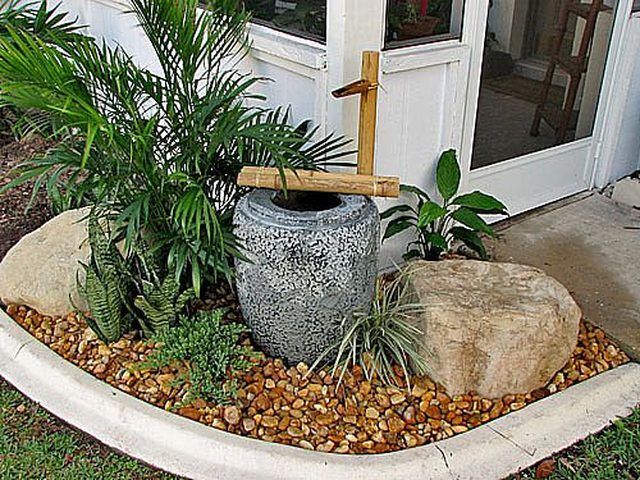
Building a Japanese-style water feature can add a dramatic accent to your garden. With a few simple elements, you can create your own "tsukubai" or water basin, where, based on Japanese tradition, participants of a tea ceremony must wash their hands before entering the tearoom. Here's how to build a garden water feature inspired by the "tsukubai."
Things You'll Need
Rocks or boulders (real or artificial)
Water jar (stone, ceramic, fiberglass or resin)
Decorative stones or pebbles
Bamboo pole
Plants
Water pump (optional)
Jigsaw or circular saw
Drill
Twine
Have a plan. The basic elements of a tsukubai are big rocks, a water jar, stones, plants and a bamboo faucet. Plan the location, the sizes and colors of the elements, and whether or not you want a full-functioning water basin connected to a water source.
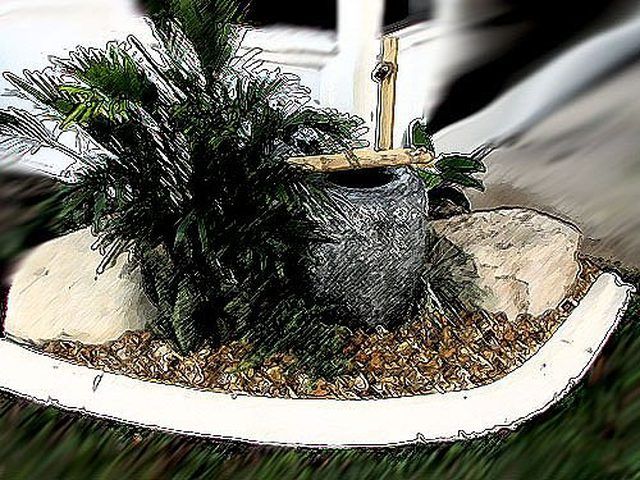
Gather your materials. Because real boulders are difficult to work with, consider sourcing substitutes from an artificial rocks factory. Fake rocks made of cast stone (used in this project, shown in photo) are lightweight but durable and realistic. Stone jars are also heavy, so consider fiberglass and resin (used in this project, shown in photo). For a full-functioning water basin, the bamboo faucet will have to be connected to a water source. For a decorative fountain, consider connecting a water pump to the bamboo fixture.
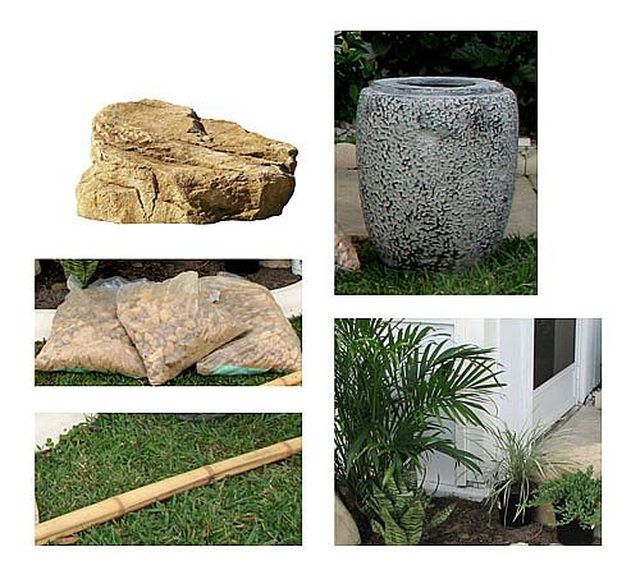
Position the big rocks first. They will help define the boundaries of your water feature. If you designed a water feature connected to a water source, this would be the time to also install the plumbing.

Plant the foliage and position the water jar.
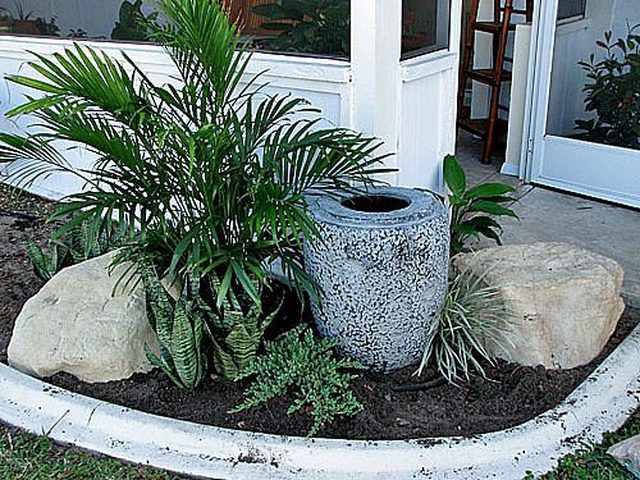
Pour the decorative stones and add the bamboo fixture.
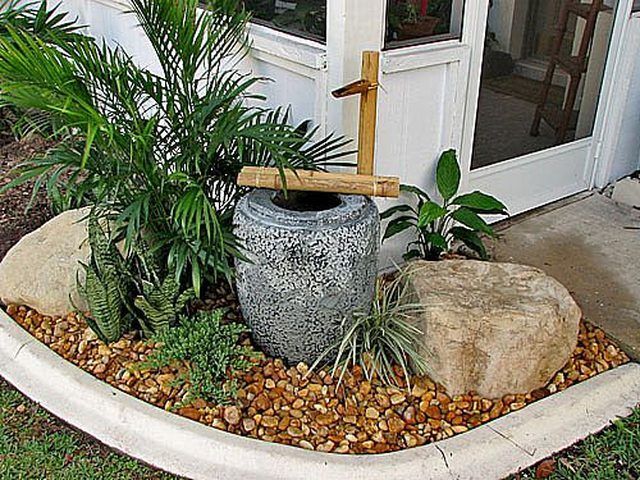
Fill the jar with water, water the plants, and enjoy!
How To Make the Bamboo Fixture
Purchase a 7-foot bamboo pole (from the neighborhood garden center).
Using a jigsaw or circular saw, cut off two foot-long sections and tie them together with twine. They will serve as a small platform on top of the water jar.
Cut off a 5-inch piece from the remaining pole.
Saw off a diagonal section from the 5-inch piece so that it becomes the fixture's spout.
Bore holes on the sides of the spout, string a piece of twine through, and tie the spout onto the bamboo pole.
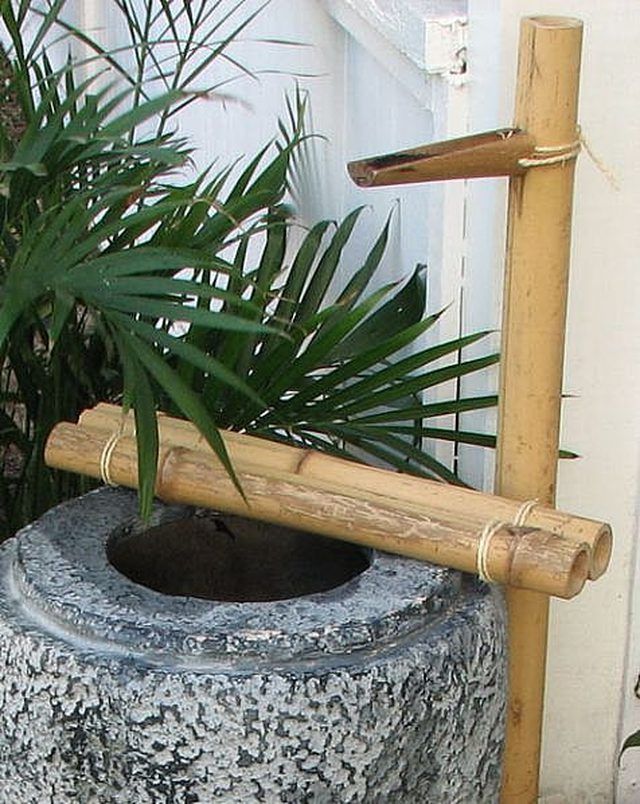
Tips & Warnings
Search the Internet for photos of Japanese-inspired garden features. You will find various renditions of the tsukubai on which to base your design.
The Internet, as well as books on gardens, will give you ideas on what plants to include in a Japanese-style setting.
For a full-functioning bamboo faucet, break through the inner segments of the bamboo and slip the hollow pole over the plumbing. Attach a faucet and direct the water flow through the bamboo spout. Camouflage the faucet with a section of bamboo or piece of wood.
Instead of making a bamboo fixture, consider purchasing a bamboo-style water fountain that can be mounted onto the jar. The water pump will be inside the jar and the water will circulate continuously between the jar and the bamboo fountain.